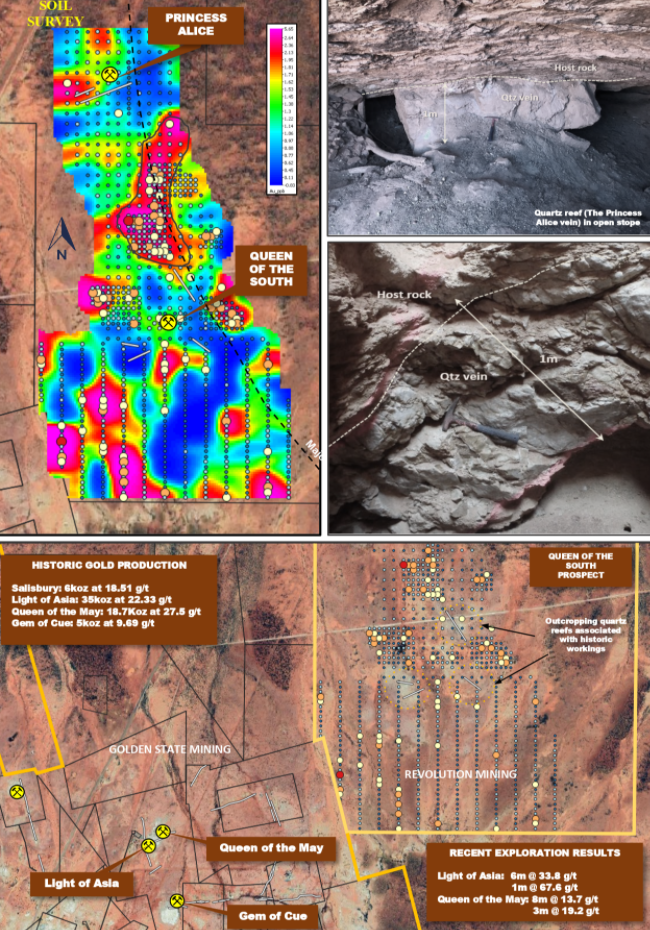- The Princess Alice Project covers approximately 31km2, located in the Mt Magnet Greenstone Belt of Western Australia and is an early stage exploration play for gold located within the currently producing Cue Mining centre north of Cue Township.
- The historical gold mines of the Cue Goldfield are ubiquitously hosted within the Cue Granite complex comprising rocks ranging from quartz diorites through granodiorite (tonalite) to monzogranites. Mineralisation commonly occurs within quartz veins on the contacts of fracture-related mafic dykes and quartz porphyries hosted by granite, with individual mines having produced up to 50,000 ounces of high-grade gold. Veins strike either north-east or north-northwest, similar in geometry to the vein orientations at Day Dawn, and typically dip to the northwest or west. Many, but not all, veins are localised within granitoid zones containing enclaves of mafic greenstone. Typical mineralised quartz veins in granite range in length from 200m to 1,000m and up to 2m in width. Locally the vein width may reach 10m at the intersection of cross-cutting veins or at deflections in strike. The veins are known to persist to at least 200m depth.
- Historical exploration on E20/893 itself has been limited to the boundaries of the tenement, with no extensive exploration being undertaken by any company thus far. Despite this, several historical workings and outcropping quartz reefs are present within the tenure, with those in the south likely extensions of the broader stockwork of historic workings north of Cue township.
- In the north of the project tenure, the Princess Alice quartz reef is a large quartz vein over 500m in strike length and is exposed within numerous shafts along the strike length. The old workings at Princess Alice have mined a 1m thick auriferous quartz vein striking around 070° and dipping 35° north north-westerly. The lithology surrounding the mineralised quartz vein is an intensely altered diorite dyke intruding a felsic schist with an intrusive contact observed. This can be observed in the deepest shaft (9.5m) where saprock is preserved. The other shafts are too shallow to determine the host lithology of the quartz vein as only extremely weathered yellow saprolite is present.
- Since acquisition of the project Revolution has undertaken soil orientation survey which has highlighted a number of moderate gold-in-soil anomalies for follow-up as well as reconnaissance rock chip sampling. A small number of rock chip samples (6) were taken from a daylighting stope at the old workings along the Princess Alice vein returning an average grade of 5.28g/t Au with a peak value of 11.8g/t Au, supporting historical records from 1906 which give production at 115t@10.4g/t Au.
- A number of historic workings, along with outcropping quartz reefs up to 2m thick are also present in the south at the Queen of the south prospect, these prospects have no records of being worked and require extensive geochemical sampling.


